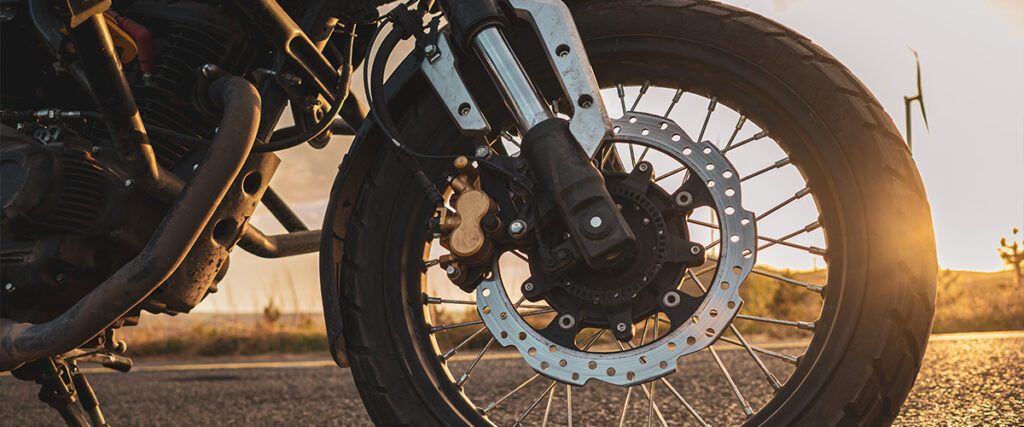
For many, motorcycles represent a way of life that is unhindered by limitations. Riding a motorcycle is an exhilarating combination of speed, quickness, and vulnerability. But motorcycle riding poses many risks to new riders and veterans of the road alike. Motorcycle accidents can result in some of the most serious injuries, with long and expensive recovery times, and sometimes, even permanent disabilities. Let a Miami motorcycle accident lawyer review your situation and fight for the compensation you need to get back on your feet.
Distracted Driving
Riding a motorcycle requires paying constant to, not only the road ahead, but to the rider’s surroundings as well. Distracted driving accounts for thousands of deaths every year. Motorcycles represent only about 3% of the vehicles on the road but are attributed to 14% of all highway fatalities. An estimated 40% of all motorcycle accidents involve distracted driving.
- Visually distracted drivers often have their attention focused someplace else, from checking their phone to reading a map or paying attention to something they see outside of their immediate vicinity. Vehicle accidents are a common cause of distracting drivers and often result in multiple-vehicle collisions.
- Loss of concentration on the road is a way in which someone might be cognitively distracted. Carrying on a conversation with a passenger or using a mobile phone while riding might be enough to draw a rider’s attention away from the road. Listening to directions on a navigation app or even “zoning out” can impair a rider’s ability to react.
- Manual distractions are when a rider is focusing on a task such as reaching for something in a pocket or even a saddle bag. They might be trying to use their mobile device or even toggling through information on their GPS or phone. A lot of brain power goes into riding, and any combination of these distractions could be enough to diminish reaction time enough that a crash occurs.
Any action that takes a rider’s eyes off the road or contributes to a distraction can be set aside for after the bike has come to a stop. Freedom of the open road also gives a rider the option of pulling off the road to safely do what needs to be done. The phone call, app toggling, digging around for snacks, or texting can always wait. And when it comes to zoning out, getting off the bike and walking or stretching can help a rider re-engage and pay attention to the road.
Lane Splitting
Lane splitting is a riding technique in which a motorcyclist maneuvers through traffic by riding on the dividing line between lanes of traffic. Though it may be legal in some states, it is illegal to do this in Florida because of the risks involved. Sudden lane changes by cars in traffic up ahead, sudden door openings, and even attempts by drivers to wreck bikes that are lane-splitting have resulted in fatalities. Lane splitting is dangerous because motorcycles are less visible than other vehicles and drivers in cars and trucks might not expect a motorcycle to go flying by when traffic is at a standstill. Alternatives to lane splitting would be riding HOV lanes and finding alternative routes that avoid traffic congestion.
Speeding
Speed is one of the biggest killers in any vehicle collision, and motorcycles are no exception. Airbags, crash paneling, roll bars, and even seat belts cannot be included in the design of motorcycles. Due to this lack of protective infrastructure surrounding the driver, the force of an impact cannot be mitigated enough to avoid harming the rider. Increased speed also decreases reaction time in case of obstacles in the road or maneuvering through traffic. At higher speeds, the force of collisions or sliding on pavement exponentially increases the severity of injuries. 34% of accidents occur due to excessive speeds. Obeying speed limits and traveling at a comfortable, safe speed both increase a rider’s chances of avoiding a collision, rather than racing right into one.
Impaired Driving
Some might believe that part of the motorcycle culture is getting a few drinks or indulging in substance use before hitting the open road. Riding a motorcycle requires the full utilization of a rider’s senses and reflexes, which are diminished or affected while using substances of just about any kind. Over a quarter of motorcycle crashes involved alcohol. Others who are driving impaired might also pose a risk to a motorcyclist since impaired drivers sometimes develop “target fixation”. Their eyes might be drawn to a motorcycle’s headlamp, and they might accidentally steer towards it. Impaired drivers might not be cognitively aware a bike is in the next lane until they have swerved over. Avoiding drinking and riding completely is crucial, but noticing the signs of impairment in other drivers on the road is a good way to avoid an accident. Stay a good distance away from drivers that you see weaving in their lanes, braking erratically, or driving through red lights. These are all potential signs of an intoxicated driver.
Lack of Protective Gear
Since motorcycles lack the protective features, other vehicles are built with (such as doors, roofs, side paneling, and safety equipment such as seatbelts and airbags), a motorcycle rider needs to protect themselves as best they can. Helmets, leathers, gloves, motorcycle boots, and other personal protective gear can reduce the severity of injuries sustained in a crash. Riding without protection is an unnecessary risk without any benefit. A Miami motorcycle accident lawyers has experience seeking compensation on behalf of those who have been injured despite wearing protective gear.
- Leathers and gloves can limit abrasions and tissue damage due to road rash. Leathers protect knees, legs, and a rider’s torso from the friction and abrasion of the road during a slide. In a serious accident, leathers likely won’t prevent a broken bone, but road rash is an injury that will take much longer to recover from.
- Helmets can absorb forces of impact that would otherwise be delivered directly into a rider’s skull and brain. Traumatic brain injuries and the chance of death increase exponentially when not wearing a helmet.
- Eye protection can limit debris such as wind, rocks, bugs, and even birds which can lead to a crash.
- Footwear can protect a rider’s feet in the event they must lay their bike down unexpectedly.
- Select only leathers and helmets that are approved as DOT-graded. This distinction means the gear has been tested and rated to withstand conditions consistent with a motorcycle crash.
Damages Associated with a Motorcycle Crash
Staying alert is crucial when riding a motorcycle. The risks and dangers of a collision more often result in serious injuries and fatalities compared to other vehicle accidents. Surviving a motorcycle accident may depend on the heroic efforts of first responders. Time in the hospital recovering from broken bones, cuts, traumatic brain injuries, and enduring surgeries might not only be painful, but incredibly expensive. Loss of future income and lifelong disability are both real possibilities. Amputations, chronic pain, loss of an eye, burns, or paralysis are common injuries from motorcycle crashes.
Call the Miami Motorcycle Accident Lawyer at Aigen Injury Law Today
Calling an attorney is an important move that could protect you in the event of a motorcycle crash. Once a crash occurs, the law limits the amount of time a victim must file a suit against those responsible. An attorney at Aigen Injury Law will not only help take the guesswork and confusion out of an already desperate situation but will also know how to navigate the process, from negotiating settlements with insurance companies to arguing the case in front of a jury. Contact us today to speak with a professional if you have been injured in a motorcycle accident.
